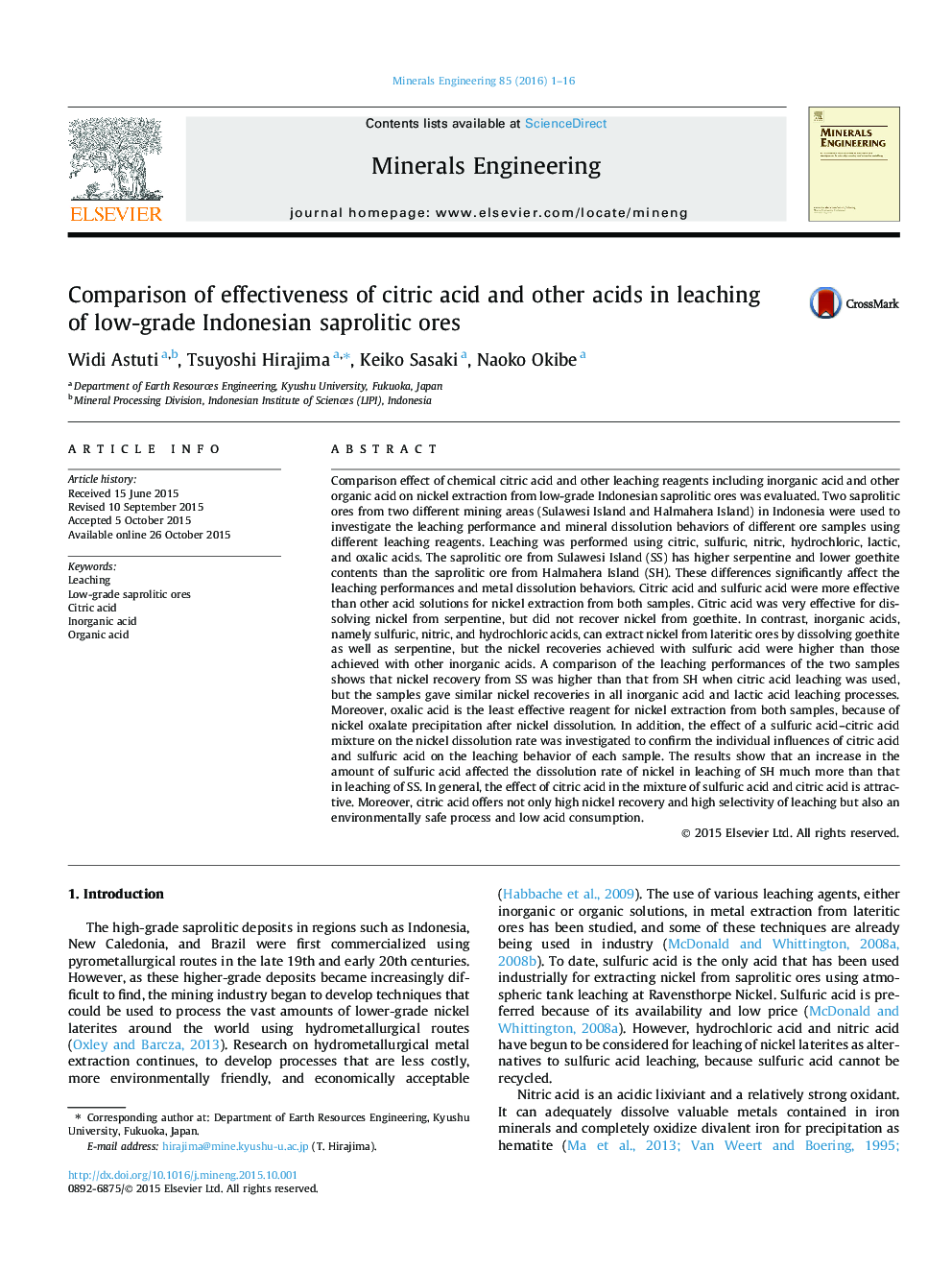| کد مقاله | کد نشریه | سال انتشار | مقاله انگلیسی | نسخه تمام متن |
|---|---|---|---|---|
| 232893 | 465312 | 2016 | 16 صفحه PDF | دانلود رایگان |
• Comparison of effectiveness of some acids on nickel leaching of saprolitic ores was studied.
• Leaching performances depend significantly on the mineral contents of ores and acid type.
• Citric and sulfuric acid were the most effective reagents on the nickel extraction.
• Citric acid is the most effective reagent to leach nickel from serpentine mineral.
• Sulfuric acid can recover nickel from either serpentine, goethite, or talc.
Comparison effect of chemical citric acid and other leaching reagents including inorganic acid and other organic acid on nickel extraction from low-grade Indonesian saprolitic ores was evaluated. Two saprolitic ores from two different mining areas (Sulawesi Island and Halmahera Island) in Indonesia were used to investigate the leaching performance and mineral dissolution behaviors of different ore samples using different leaching reagents. Leaching was performed using citric, sulfuric, nitric, hydrochloric, lactic, and oxalic acids. The saprolitic ore from Sulawesi Island (SS) has higher serpentine and lower goethite contents than the saprolitic ore from Halmahera Island (SH). These differences significantly affect the leaching performances and metal dissolution behaviors. Citric acid and sulfuric acid were more effective than other acid solutions for nickel extraction from both samples. Citric acid was very effective for dissolving nickel from serpentine, but did not recover nickel from goethite. In contrast, inorganic acids, namely sulfuric, nitric, and hydrochloric acids, can extract nickel from lateritic ores by dissolving goethite as well as serpentine, but the nickel recoveries achieved with sulfuric acid were higher than those achieved with other inorganic acids. A comparison of the leaching performances of the two samples shows that nickel recovery from SS was higher than that from SH when citric acid leaching was used, but the samples gave similar nickel recoveries in all inorganic acid and lactic acid leaching processes. Moreover, oxalic acid is the least effective reagent for nickel extraction from both samples, because of nickel oxalate precipitation after nickel dissolution. In addition, the effect of a sulfuric acid–citric acid mixture on the nickel dissolution rate was investigated to confirm the individual influences of citric acid and sulfuric acid on the leaching behavior of each sample. The results show that an increase in the amount of sulfuric acid affected the dissolution rate of nickel in leaching of SH much more than that in leaching of SS. In general, the effect of citric acid in the mixture of sulfuric acid and citric acid is attractive. Moreover, citric acid offers not only high nickel recovery and high selectivity of leaching but also an environmentally safe process and low acid consumption.
Journal: Minerals Engineering - Volume 85, January 2016, Pages 1–16
